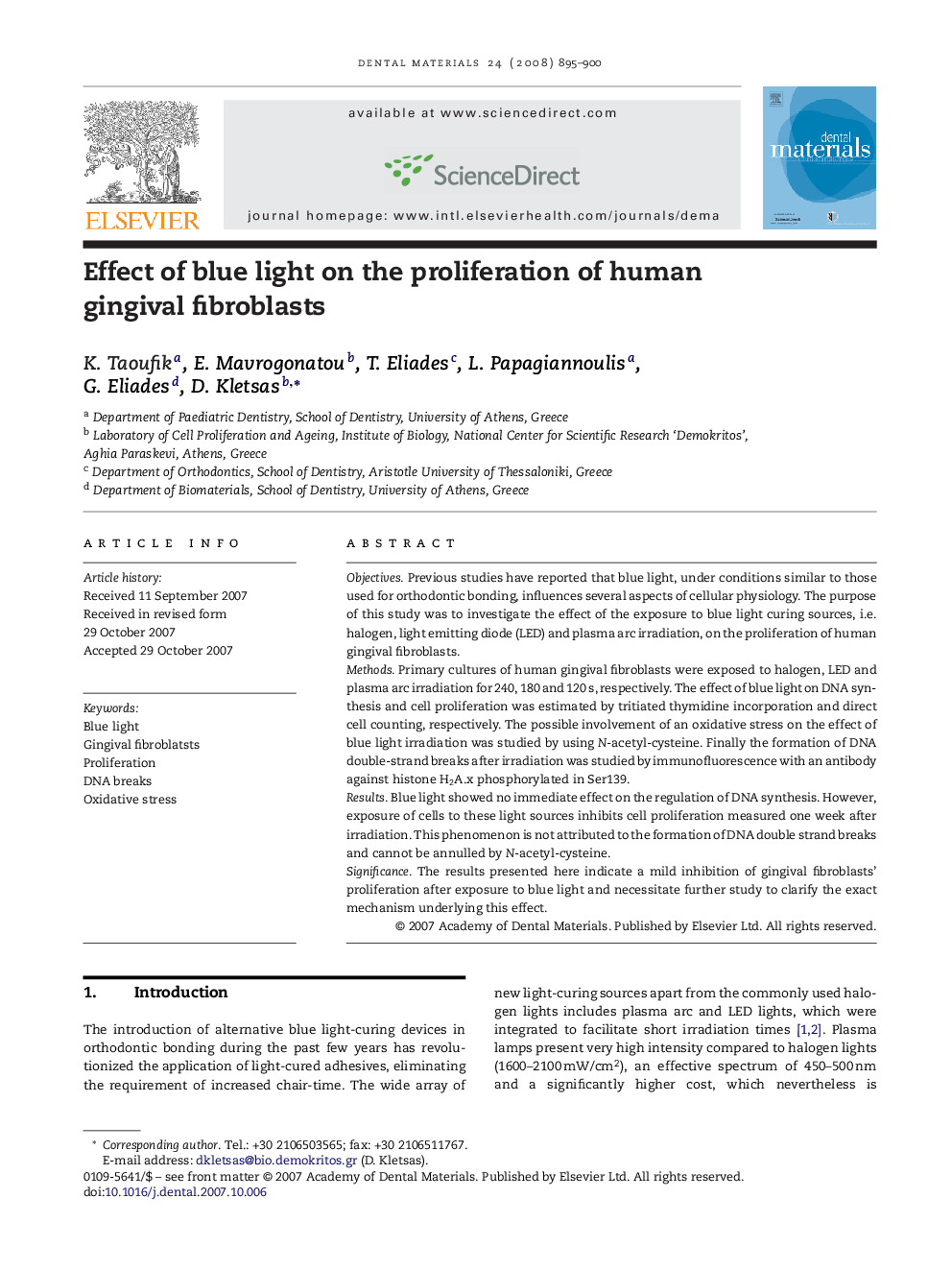| Article ID | Journal | Published Year | Pages | File Type |
|---|---|---|---|---|
| 1422983 | Dental Materials | 2008 | 6 Pages |
ObjectivesPrevious studies have reported that blue light, under conditions similar to those used for orthodontic bonding, influences several aspects of cellular physiology. The purpose of this study was to investigate the effect of the exposure to blue light curing sources, i.e. halogen, light emitting diode (LED) and plasma arc irradiation, on the proliferation of human gingival fibroblasts.MethodsPrimary cultures of human gingival fibroblasts were exposed to halogen, LED and plasma arc irradiation for 240, 180 and 120 s, respectively. The effect of blue light on DNA synthesis and cell proliferation was estimated by tritiated thymidine incorporation and direct cell counting, respectively. The possible involvement of an oxidative stress on the effect of blue light irradiation was studied by using N-acetyl-cysteine. Finally the formation of DNA double-strand breaks after irradiation was studied by immunofluorescence with an antibody against histone H2A.x phosphorylated in Ser139.ResultsBlue light showed no immediate effect on the regulation of DNA synthesis. However, exposure of cells to these light sources inhibits cell proliferation measured one week after irradiation. This phenomenon is not attributed to the formation of DNA double strand breaks and cannot be annulled by N-acetyl-cysteine.SignificanceThe results presented here indicate a mild inhibition of gingival fibroblasts’ proliferation after exposure to blue light and necessitate further study to clarify the exact mechanism underlying this effect.
